Whales have roamed the oceans for millions of years, with some species standing out not just for their size but for their incredible lifespans. From the icy waters of the Arctic to the temperate coasts worldwide, each species brings its own fascinating traits and survival stories. Some whales, like the bowhead, are known to live for centuries, while others, such as the beluga, have unique adaptations for their habitats. This list highlights some of the oldest whale species, exploring their lifespans, habitats, and unique characteristics that make them essential to marine ecosystems.
Minke Whale (Balaenoptera acutorostrata)
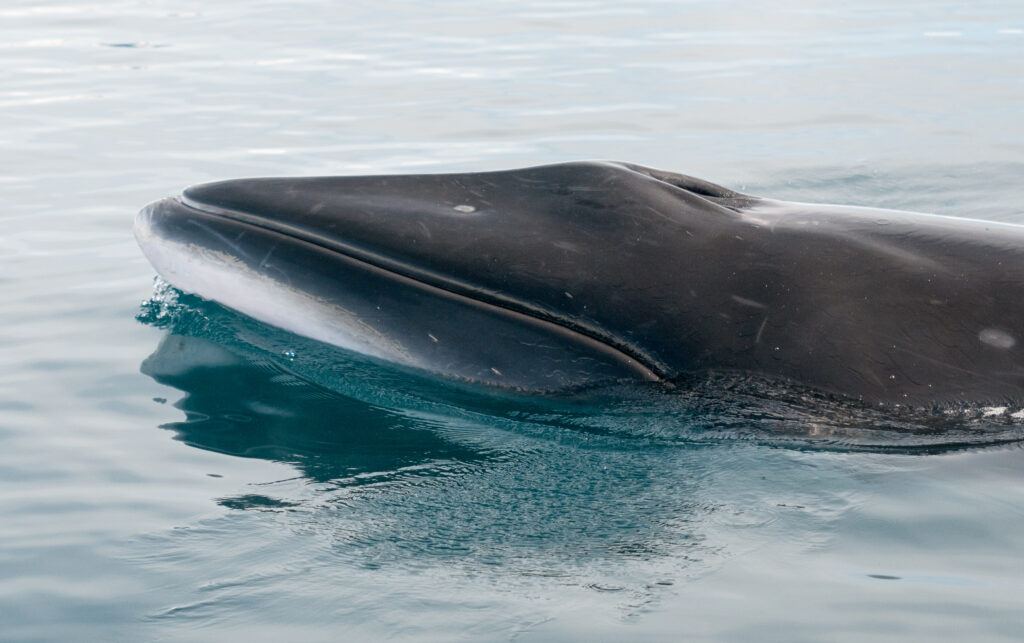
The minke whale, Balaenoptera acutorostrata, is the smallest of the baleen whales, typically reaching about 7 to 10 meters in length and weighing between 5,000 and 10,000 kilograms. They are found in oceans worldwide, with distinct populations in the North Atlantic, North Pacific, and Southern Ocean. They have a lifespan of 30 to 50 years, though some individuals may live longer. They primarily feed on krill, small fish, and other planktonic organisms, often consuming large amounts during seasonal migrations. Known for their curious nature, minke whales are commonly spotted near boats and often engage in fast swimming and breaching. They are generally solitary but can be seen in small groups during feeding seasons. Due to their smaller size and widespread distribution, they face fewer threats than other whales but are still subject to conservation concerns.
Beluga Whale (Delphinapterus leucas)
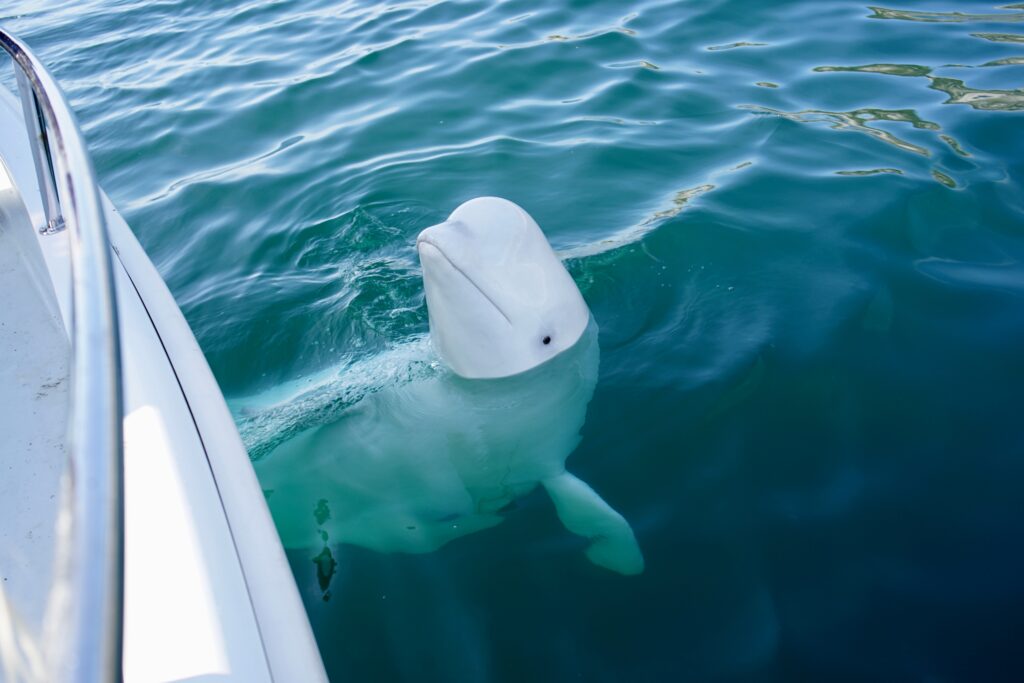
The beluga whale, Delphinapterus leucas, is well-known for its striking white color and high-pitched vocalizations, which have earned it the nickname “canary of the sea.” Found in Arctic and sub-Arctic regions, they inhabit coastal waters and sometimes even rivers, showing a preference for colder environments. They have a lifespan of around 35 to 50 years, though some individuals live longer in the wild. They are smaller than most other whales, growing up to 5 meters in length and weighing around 1,600 kilograms. They have a diverse diet that includes fish, crustaceans, and marine worms, adapting their eating habits based on seasonal availability. Highly social creatures, belugas often form pods and are known for their complex communication and playfulness. Due to habitat changes and pollution, they are considered vulnerable, with various conservation programs aimed at protecting their habitats.
Narwhal (Monodon monoceros)
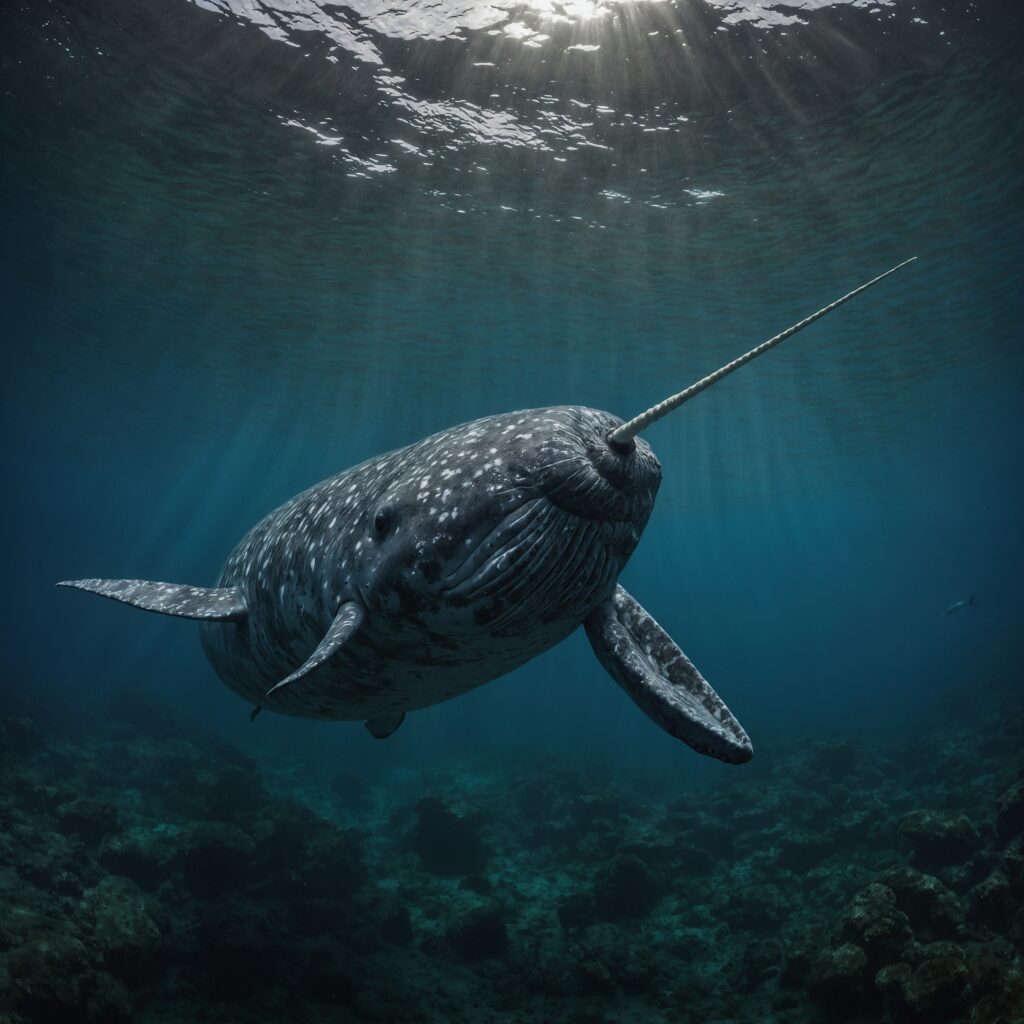
The narwhal, Monodon monoceros, often referred to as the “unicorn of the sea,” is famous for the long, spiral tusk that can extend up to 3 meters in males. They are found primarily in the Arctic waters of Canada, Greenland, Norway, and Russia. They typically live up to 50 years, although some have been recorded to live beyond 90 years. They are smaller than other whales, averaging around 4 to 5 meters in length and weighing between 800 and 1,600 kilograms. They feed on fish, shrimp, and squid, diving up to 1,500 meters to hunt in deep, icy waters. Their tusk, which is an elongated tooth, is thought to play a role in mating or sensory perception. Due to climate change and hunting, narwhals are considered near-threatened, and conservation efforts are ongoing to protect their unique populations.
Southern Right Whale (Eubalaena australis)
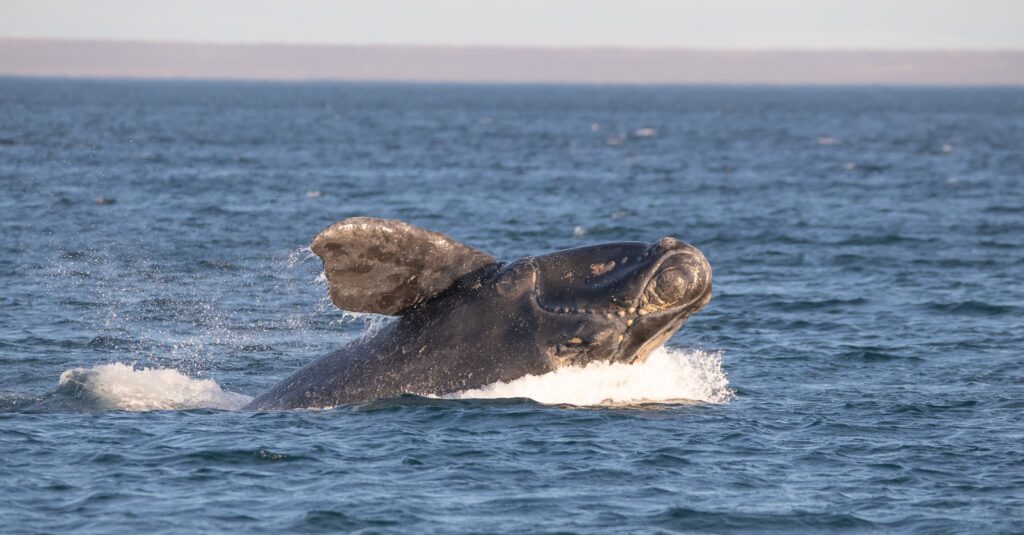
The southern right whale, Eubalaena australis, is recognized by its robust body, callosities on its head, and lack of a dorsal fin. Inhabiting the southern hemisphere, these whales are commonly found along the coasts of Argentina, South Africa, Australia, and New Zealand. They have a lifespan of up to 70 years, with adult whales reaching lengths of 14 to 18 meters and weighing up to 80 metric tons. They feed on zooplankton and krill, using their large baleen plates to filter food from the water. They are known for their slow movements and acrobatic behaviors, including breaching and tail-slapping. They were heavily targeted during the whaling era, but international protection has helped their populations recover. They are often observed in shallow coastal waters, where they come to breed and raise their young.
Sperm Whale (Physeter macrocephalus)
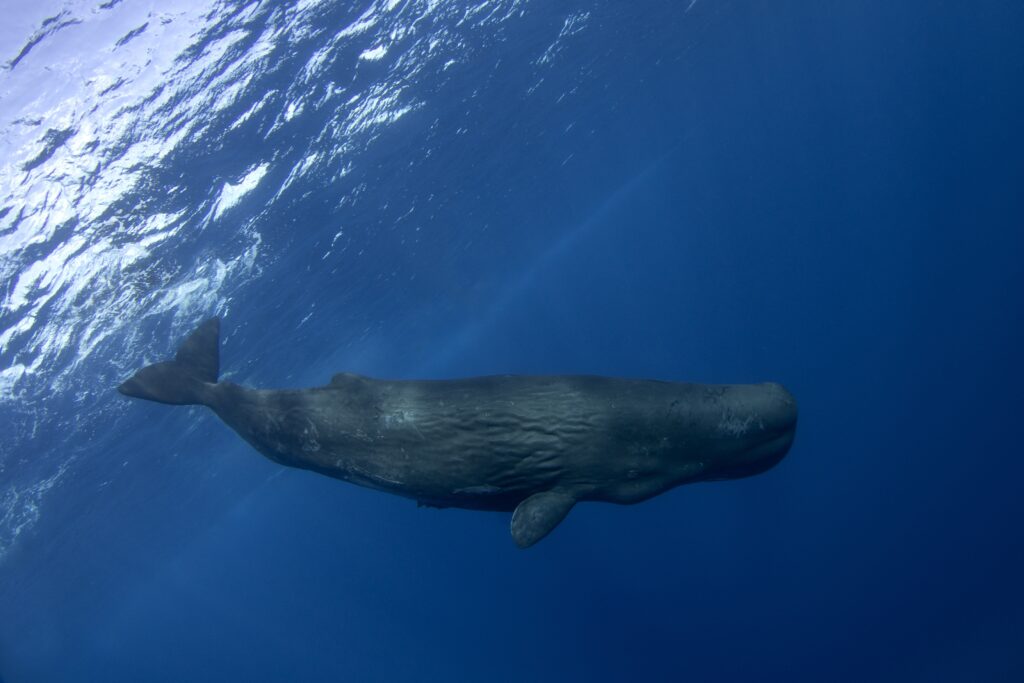
Sperm whales, Physeter macrocephalus, are the largest toothed predators, with males reaching lengths of 16 to 20 meters and weighing up to 57 metric tons. Found in deep oceans worldwide, they dive to incredible depths of over 3,000 meters to hunt squid and fish. They have a lifespan of 70 years or more, with females often forming close-knit social groups. They possess the largest brain of any animal, which aids in their complex social structures and problem-solving abilities. They communicate with a series of clicks and codas, believed to be a form of echolocation and social bonding. They have been popularized by stories like “Moby-Dick,” but they remain elusive due to their deep-diving habits. Conservationists monitor their populations carefully due to their slow reproduction rates and vulnerability to ship strikes.
Humpback Whale (Megaptera novaeangliae)
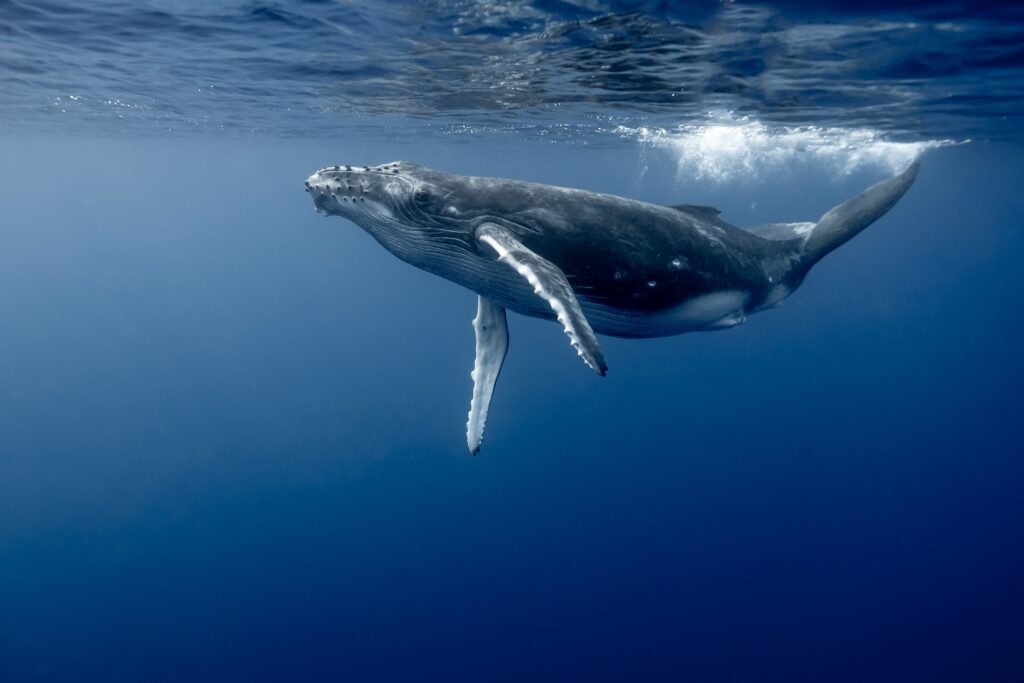
Humpback whales, Megaptera novaeangliae, are known for their acrobatic breaches and complex songs. They inhabit all major oceans, with distinct populations in the North Atlantic, Pacific, Southern, and Indian Oceans. Humpbacks typically live between 45 to 100 years, reaching lengths of about 12 to 16 meters and weighs around 36 metric tons. Their diet includes krill and small fish, which they often hunt using bubble-net feeding techniques. Each one has unique patterns on its tail flukes, allowing researchers to identify individuals. Their songs, primarily produced by males, are believed to play a role in mating behaviors. Conservation efforts have led to a rebound in their populations, though they still face threats from entanglement and ship strikes. They are highly social and are known for their interactions with other marine life.
Blue Whale (Balaenoptera musculus)
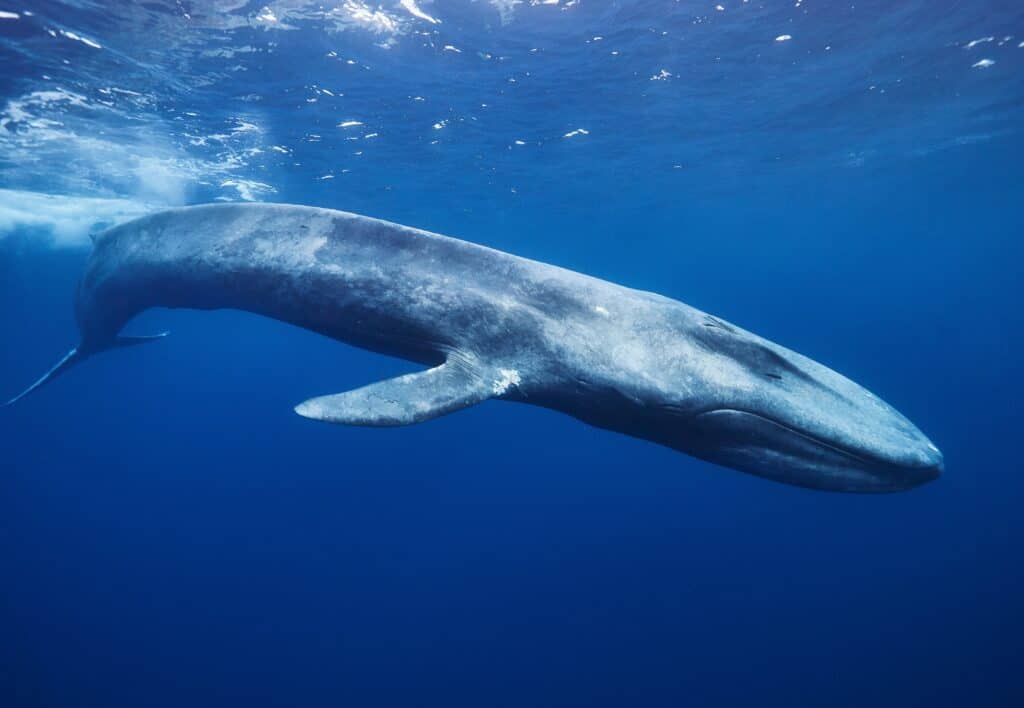
The blue whale, Balaenoptera musculus, holds the title of the largest animal ever known, with lengths reaching up to 30 meters and weights exceeding 173 metric tons. They inhabit various oceans, including the North Pacific, Antarctic, and Indian Oceans, as well as parts of the North Atlantic. They have an estimated lifespan ranging from 80 to 110 years. Their diet consists almost exclusively of tiny shrimp-like animals called krill, consuming up to 4 tons daily during feeding seasons. Despite their immense size, they are capable of reaching speeds up to 20 miles per hour over short bursts. Their vocalizations are among the loudest of any animal, aiding in communication across vast ocean expanses. Currently, they are classified as endangered, with populations slowly recovering after the cessation of commercial whaling. Their massive size and unique vocal patterns make them a focal point in marine conservation.
Fin Whale (Balaenoptera physalus)

The fin whale, Balaenoptera physalus, is the second-largest mammal on Earth, reaching lengths up to 27 meters and weighs around 74 metric tons. They are found in all major oceans, from polar to tropical waters, showcasing a broad distribution. Fin whales have an average lifespan of about 94 years, with some individuals living up to 140 years. Known for their slender bodies and fast swimming speeds, they are often called the “greyhounds of the sea.” Their diet primarily consists of small schooling fish, squid, and crustaceans, which they filter through baleen plates. Fin whales produce low-frequency vocalizations that can travel across vast ocean distances, facilitating long-range communication. Despite their size and speed, they were heavily hunted during the 20th century, leading to significant population declines.
Gray Whale (Eschrichtius robustus)
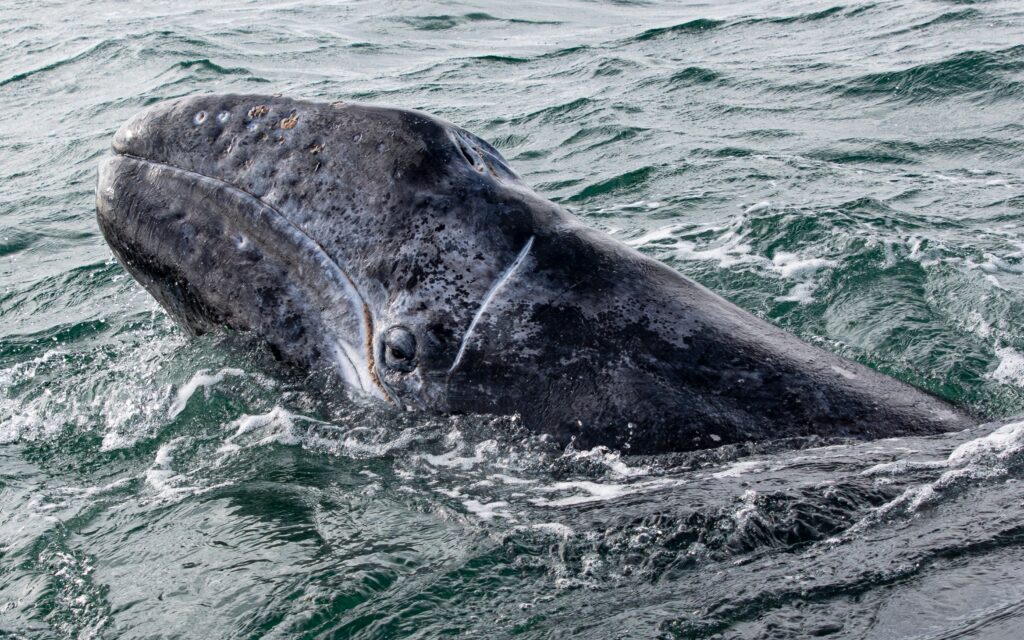
The gray whale, Eschrichtius robustus, is known for its impressive migration journey, covering around 10,000 to 12,000 miles annually between feeding and breeding grounds. Found primarily along the North Pacific coast, they are recognizable by their mottled gray skin and the barnacles that often adorn them. They grow up to 15 meters in length and weigh around 36 metric tons, with a lifespan that can exceed 70 years. They are bottom feeders, using their baleen plates to sift through sediment for small crustaceans and worms. Unlike most whales, they tend to stay closer to coastal areas, making them a favorite among whale-watchers. They are known for their curiosity and often approach boats, which has earned them the nickname “friendly whale.” Despite past endangerment, conservation efforts have led to a significant rebound in their population.
Bowhead Whale (Balaena mysticetus)
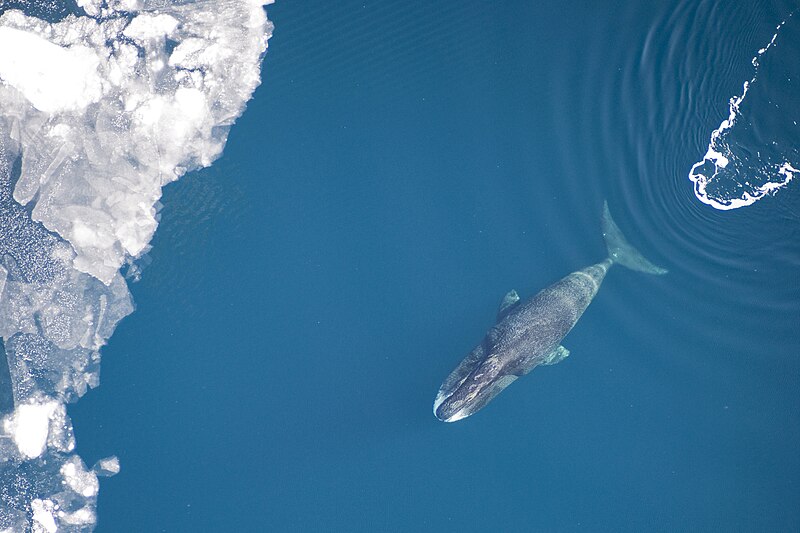
Vicki Beaver, Alaska Fisheries Science Center, NOAA FIsheries, Marine Mammal/ Wikimedia Commons
The bowhead whale, Balaena mysticetus, is renowned for its exceptional longevity, with individuals living over 200 years, making it the longest-lived mammal. They inhabit the Arctic and sub-Arctic waters, enduring extreme cold thanks to their thick blubber, which can be up to 50 centimeters thick. Adult bowheads typically measure between 14 to 18 meters in length and weigh approximately 75 to 100 metric tons. Their massive skulls, comprising about a third of their body length, enable them to break through sea ice to breathe. As filter feeders, they consume small marine organisms like krill and copepods. Despite their size, they are agile swimmers and can perform acrobatic breaches. They are currently classified as endangered, with an estimated population of 8,000 to 12,000 individuals. They have a unique ability to thrive in icy environments, a trait that supports their extended lifespans in the wild.
This article originally appeared on Rarest.org.
More from Rarest.org
16 Classic Trucks That Defined American Roadways

Classic trucks have long been a backbone of American roadways. Built for durability and performance, these trucks have earned their place in history. The following list highlights the most iconic trucks that shaped American driving culture. Read More.
10 Largest Mosques in the World

Mosques are not just places of worship but also architectural marvels that represent the cultural, spiritual, and artistic heritage of the Islamic world. Across the globe, these structures stand out for their immense size, intricate designs, and historical significance. Read More.
9 Enigmatic Deep-Sea Creatures That Glow in the Dark
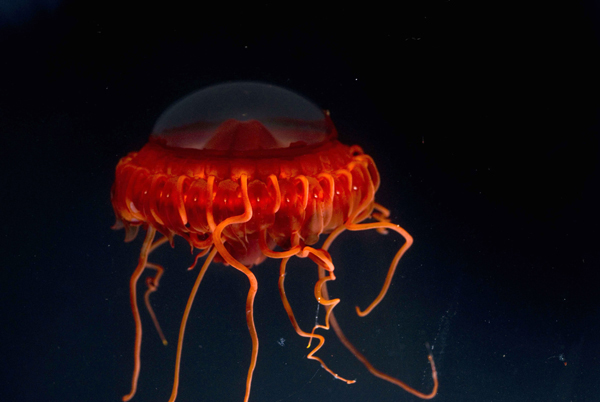
The deep sea holds some of the most fascinating creatures on Earth, many of which have developed the ability to glow in the dark. These bioluminescent animals use their light-producing capabilities for a variety of reasons, including attracting prey, camouflage, or communication. Read More.
